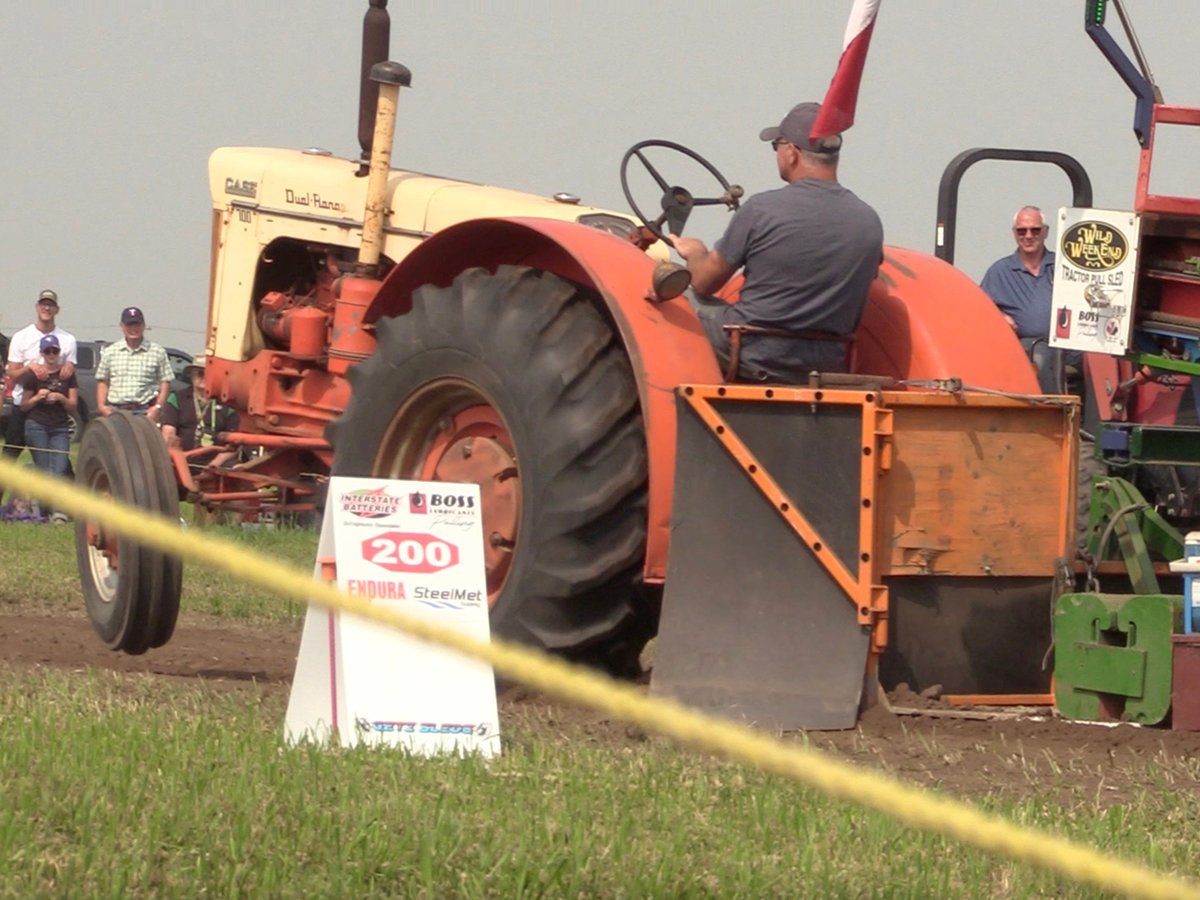Chopping trees and running the family sawmill provided plenty of things to do and watch for a young girl on the farm
When a fine spring day would arrive, with the snow not yet melted and the weather balmy, I would jump out of the horse-drawn school van, burst into the kitchen just long enough to toss my books and lunch pail on the counter and head back outside.
I had seen the tell-tale tracks made by the big tires on our Massey tractor and I was keen to follow their path.
Through the farmyard, down across the frozen river, up the gentle bank on the other side and I could hear the sound of a tree being chopped down.
Read Also

Vintage power on display at Saskatchewan tractor pull
At the Ag in Motion farm show held earlier this year near Langham, Sask., a vintage tractor pull event drew pretty significant crowds of show goers, who were mostly farmers.
There was something magical to me about having access to this northwest corner of our farm, where in summer the undergrowth made it difficult to venture.
In winter, however, Dad would gain access with the tractor to cut down some of the large trees and skid them out with logging chains to where our small sawmill stood at the edge of a ravine behind our house.
My teenage brother and a cousin were usually the ones wielding the axes and as I grew closer, I could hear their banter and then a triumphant “timber” they would shout as a tree fell.
One spring when removing a dead tree to make way for the tractor, they disturbed a slumbering raccoon. Jolted from its tree-trunk hideaway, it scurried away through the bush. I fretted about whether it could find relatives with which it could hunker down until spring arrived.
In addition to the trees skidded out of the bush, the horses dragged logs to the sawmill too. Many mornings I saw a team of horses plodding up our lane, dwarfed by the load of logs they pulled. I followed them to the sawmill, slipping and sliding in the smooth icy tracks made by the sleigh runners in snow.
At the mill, Dad would be leaning over the saw blade, systematically filing the teeth. Although it stood idle throughout winter, the ancient Lawson tractor that powered the mill would snort to life each spring with unexpected gusto, frightening the horses and silencing critics with the first sharp crack of its exhaust.
For the next few weeks my ears became attuned to the opening and closing of its governor as the saw blade bit into heavy oak logs and whizzed through poplars.
People came from miles around for lumber and slabs and sawdust. I am sure my mother was often hard-pressed to feed the unexpected visitors but they were always invited to come in at mealtime and share what was often potatoes, salt pork and homemade bread.
My father regarded kids, kings and comrades as equals, each with a unique contribution to make. We were sometimes joined by folks with Ukrainian, French, German and British accents and by quietly listening, I gained insight into their various cultures as Dad respectfully plied them with questions.
His concern for safety around the saw, however, sometimes revealed an abrupt, no-nonsense approach that stopped carelessness in its tracks. I remember the day a gruff army sergeant from the corps of engineers brought a number of reserve cadets with him. They were to assist around the mill while timbers were being sawn for a bridge-building project. After barking out just one order, the sergeant was stopped in his tracks by my father.
“Let’s get this straight right here and now. You might be boss over those boys elsewhere, but when you are here, you will do what I tell you.”
The cadets muffled their amusement at the sight of their hefty sergeant meekly submitting to a small, slight man whose overalls hung loosely on his wiry frame.
A steady procession of trucks, tractors and horses hauling away loads of sawdust and slabs reduced the yard to a quagmire of water-filled ruts. I embarked on an elaborate drainage system by digging little canals between the puddles.
The flow could be controlled by making dams out of mud, bulldozing it into position as temporary dikes with the blade of the garden hoe. I learned first-hand that water doesn’t flow uphill, that sudden runoff can ruin the best laid plans and that my feet got cold standing in icy puddles.
When I’d go inside to warm up, somebody would ride roughshod over my drainage system with a load of lumber while I was gone and I was back at square one.
The utter frustration of it all was tempered by the fact that Mom was about to serve afternoon lunch to the men at the sawmill.
“Here, Alma, would you take the pan of salmon sandwiches while I carry the white granite pitcher full of hot coffee?”
“You bet!”
Perched up on a pile of logs high up on the skid way, my hoe propped beside a cant hook, I’d look down at all the water filled ruts while I ate my sandwich and plan the next phase of my drainage scheme.
By the time I had finished carrying it out, the evening sun was dipping below the trees, the last log had been squared and the belt connecting the sawmill to the pulley of the Lawson tractor hung slack.
It was quitting time.

















